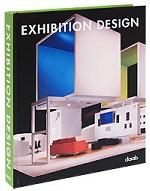

Дата отгрузки на данный момент неизвестна.
Товар закончился у основного поставщика, и, после получения заказа от вас, мы закажем его у других поставщиков. Мы не можем гарантировать выполнение данного заказа, поэтому настоятельно не рекомендуем заказывать данный товар, используя предоплату (банковский перевод и т.п.). Заказ на такой товар действителен в течение 3 недель (если в течение 3 недель товар не придет, заказ будет отменен). Однако, это не означает, что товар нельзя заказать вновь, поскольку в некоторых случаях возможны и более поздние поставки.
Технические характеристики
Over the past fifty years, many of the innovations that have been implemented in architecture and interior design would never have seen the light of day, or would at least have taken much longer to appear if it hadn`t been for the fertile testing ground of portable architecture. There has barely been an important architect in the world for the past century that has not taken advantage of the possibilities of the tentative play and experimentation provided by the design of exhibition sites for trade fairs and world expos. In fact, this branch of architecture includes milestones such as Alvar Aalto`s Finnish Pavilion for the Venice Biennale and the German Pavilion of the 1929 Barcelona World Exposition, and such is the importance of these two examples of portable architecture that they are both still standing today. If the great designers often turn to this type of work it is because it embodies an intermediate step between the creation of marquees and the construction of large buildings, and this gives flight to their creativity.
The design of exhibition spaces also entails a number of added difficulties which can turn into real challenges for their creators, such as budgetary limitations, lack of space and the proverbial need for structures that can be quickly installed and easily disassembled by small teams of workers. This circumstance often leads people to view this branch of architecture as a game.
This publication aims to provide a balanced combination of very recent examples from trade fairs and cultural installations. The differences between the two are obvious, as the former aim for optimal product positioning to promote sales, while the latter work on the best way to publicize ideas, information or works of art.
The spectacular selection of projects in this book ranges from a small stand designed to capture the visitor`s attention at a large trade fair, such as the Sci Fi project, to large exhibition sites of museum-like proportion such as the BMW Pavilion, as well as temporary exhibition spaces in cultural centers and permanent showrooms. There are also various interesting examples of innovations in the design of exhibition spaces whose goal is simply promotion with no link to a specific commercial or cultural product.
In a world with an economic system that requires permanent renovation and continuous advertising ploys, the ever-growing importance of portable architecture comes as no surprise, as it is limited to surrounding and framing products that are sold or promoted at an accelerating pace.
Формат издания: 24,5 см х 28,5 см.